Importance of Value-Based Care with a Patient-Centered Approach

Improve Quality of Care with Strong Patient Partnerships
Private investments in healthcare organizations providing value-based care more than quadrupled between 2019 and 2021, and this growth is expected to double again in the years to come – contributing to improved quality of care and more cost control for these businesses.1 There has also been a trend toward patient-centered care in the last decade, which has been associated with higher organizational performance.2
Implementing an approach within your healthcare organization that is both value-based and patient-centric may help your organization receive numerous benefits. Before getting into what those benefits are or how to implement a value-based system with a patient-centered approach, let’s first get clear on what each entails.
What is Value-Based Care?
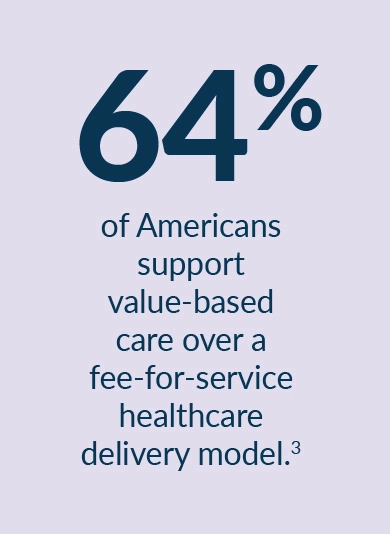

The Centers for Medicare and Medicaid Services (CMS) defines value-based care as a form of healthcare that “focuses on quality, provider performance and the patient experience.”4 Additionally, the value provided is unique to each patient as it is based on the factors they consider most important in their individual health and wellness journey, which can vary from one person to the next.
Providing value-based care requires that the patient’s healthcare providers work together and coordinate their efforts, says the CMS, such as by scheduling all necessary testing on the same day and time to reduce the number of visits the patient must make to the same healthcare facility. Value-based care also addresses all of a patient’s needs – what they need mentally, physically, behaviorally, and socially – because it is focused on treating the whole person as opposed to only addressing compartmentalized aspects of an individual’s wellness.
What is a Patient-Centered Approach?
In 2017, there was no universally accepted definition of patient centricity. So, a group of researchers came up with one, ultimately defining it as “[p]utting the patient first in an open and sustained engagement of the patient to respectfully and compassionately achieve the best experience and outcome for that person and their family.”5 A patient-centered approach, also sometimes referred to as a person-centered approach, is holistic in that it considers the whole patient.
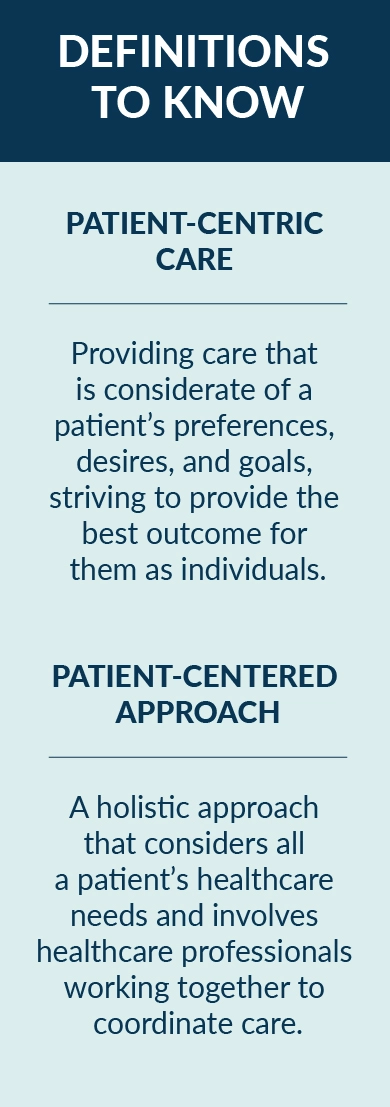
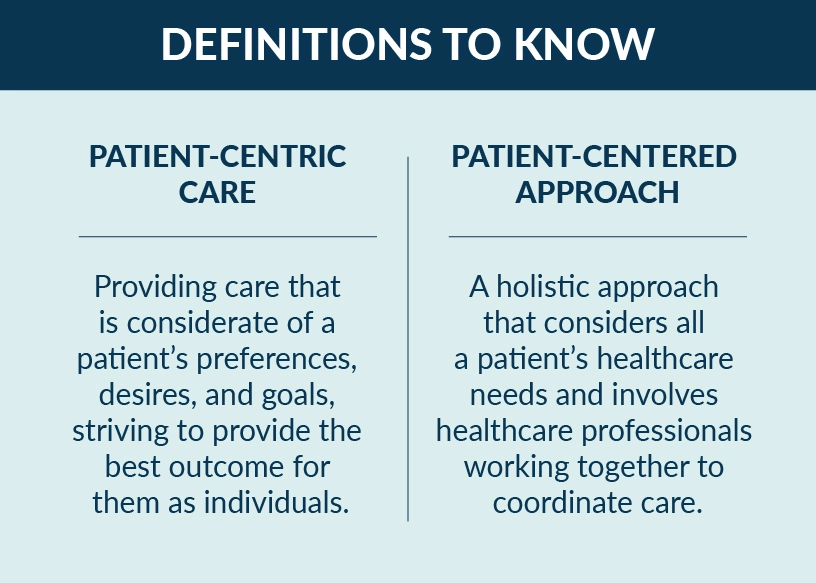
Independent Advantages of Value-Based Care and a Patient-Centered Approach
On their own, each healthcare concept or framework offers benefits. For example, value-based care can:
- Make healthcare more convenient
- Reduce obstacles or barriers to care
- Improve patient care
- Support greater health equity
- Lower healthcare costs, for patients and organizations6
There are also advantages of a patient-centered approach to healthcare. Providing patient-centric care can increase satisfaction rates, lower healthcare costs, and improve outcomes for patients while improving efficiency and reducing operational expenses for healthcare organizations.7
Patient-centric care also shifts the focus from disease prevention to health promotion, thereby contributing to greater well-being for society as a whole.8
Combined Advantages of a Dual Approach
What happens when you combine value-based care with a person-centered approach? On November 28, 2023, the journal NEHM Catalyst published an article in which the authors contend that both can reduce burnout in healthcare clinicians while also helping to address other factors that contribute to a person’s wellness, known as social determinants of health – even going so far as to say that value-based care and patient-centered care are one and the same.9
Other researchers report that a value-based person-centered approach offers improved program effectiveness and value, reduces the financial burden for patients, and encourages coordination among stakeholders.10 These researchers go on to say that this type of model also acknowledges that:
- Patients’ health can fluctuate, which means that their care-related needs fluctuate too.
- Care management programs should align with patients’ specific needs, offering a low-touch plan for low-risk patients and a higher-touch plan for high-risk patients.
- Developing a partnership with other healthcare organizations and providers can provide patients with a more complete, less fragmented experience.
- Both short- and long-term care programs should be routinely reviewed for effectiveness in terms of patient experience and health equity, in addition to program utilization and cost.
- Value of care should be determined utilizing both patient and system perspectives, which may take a year or more to show any type of return since it requires relationship building and behavioral change.
How to Implement a Value-Based, Patient-Centered Approach
Taking certain actions can help organizations develop a healthcare delivery system focused on value-based care with a patient-centered approach. Here are several to consider.
Follow the Evidence
Industry experts talk about the importance of utilizing evidence-based care when providing value-based, patient-centric care.11 To help determine the quality of evidence for a particular modality or treatment, consider the seven levels of evidential research, in which the risk of bias decreases as you progress through the hierarchy.12
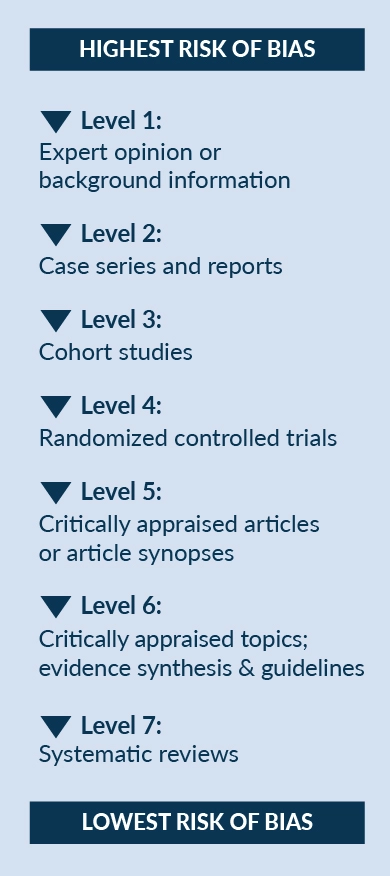
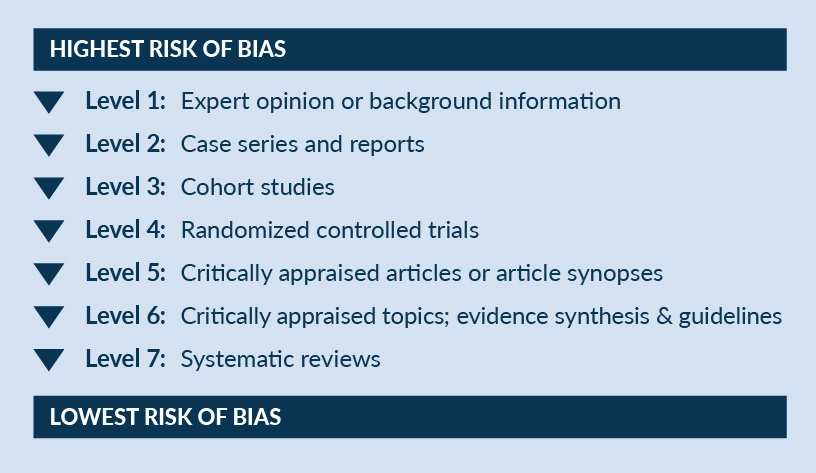
Develop a Collaborative Mindset
Both value-based care and a patient-centered approach involve healthcare professionals working together for the benefit of the patient. Collaboration has additional benefits, such as improving problem-solving abilities, increased learning, and greater innovation.13 Examples of collaboration to consider implementing in your organization may include:
- Making it standard practice to talk with the patient’s other healthcare team members to gain their insight and discuss potential treatments or wellness solutions.
- Including a variety of healthcare professionals in the discussion, including those who provide physical, mental, and complementary or alternative healthcare services.
- Considering all the future appointments a patient needs, then scheduling them on the same days and times when possible to reduce the time required for the patient to look after their health.
Consider Patients’ Nonmedical Needs
Value-based patient-centric care is holistic in that it considers the entire person. This involves recognizing and treating their medical needs but also considering the nonmedical factors that may be contributing to their health issues.4 These outside nonmedical factors are often referred to as social determinants of health, such as those related to the person’s environment, income, education, and more.14
Maybe you’ll learn that they have no support at home, which makes it harder to develop and stick with good health habits. Or they might reveal that they don’t have reliable transportation, which prevents them from getting to the store often to get healthy food. The more you know about the whole patient, the easier it becomes to see all their challenges.
Focus on Meaningful Patient Engagement
Part of being a healthcare professional is knowing how to help your patients. But what you know is only half of the equation. When providing patient-centric care, their voice matters too. Including patients in the creation of their healthcare plan means finding ways to engage them in the process.
Research published in Therapeutic Innovation & Regulatory Science provides four key questions that can lead to more meaningful patient engagement and, therefore, improved healthcare systems:15
- What do patients need from their treatment?
- What are patient priorities?
- What improvements do patients need?
- What changes do caregivers and family need?
Utilize Information-Sharing Technology
Research suggests that while numerous industries are benefiting from ‘platform ecosystems,’ the healthcare sector is lagging, largely due to the security of private health information.16 Yet, creating a platform that all of a patient’s healthcare providers could access would allow maximal collaboration. This type of platform is known as an electronic health information exchange or HIE and can provide several benefits, including improving patient care in terms of speed, quality, safety, and cost.17
Other forms of technology that can provide important health-related data, making them valuable to patient-centric care, include:18
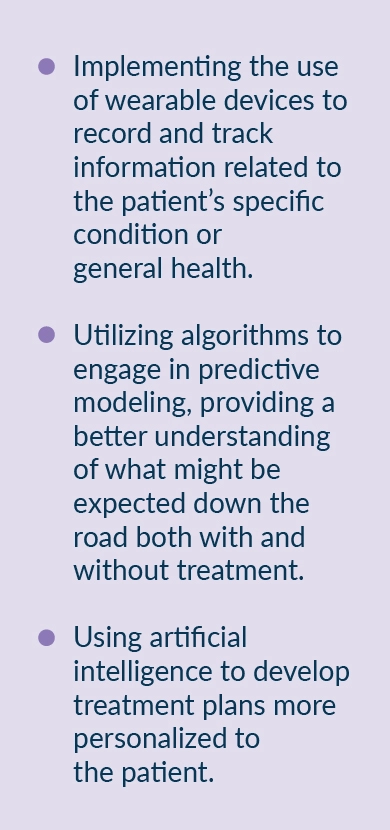
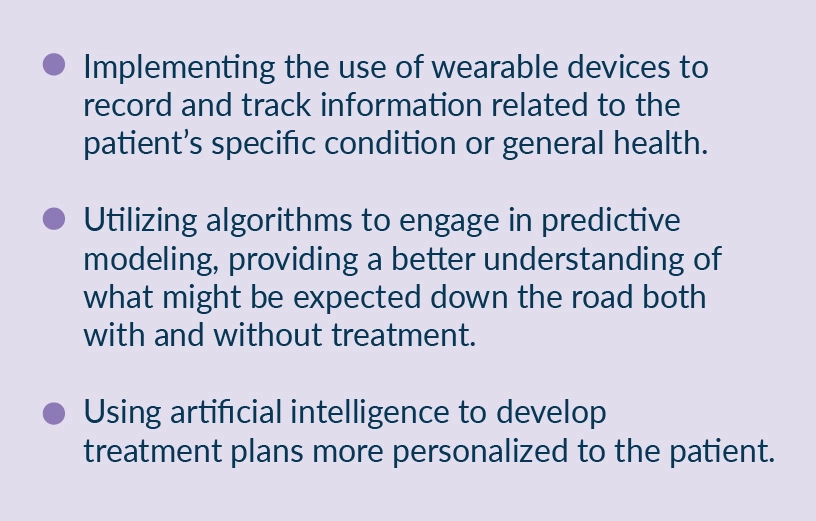
Nasium Training: Your Partner in Value-Based Patient-Centric Care
Nasium Training understands the importance of value-based care with a patient-centered approach and the benefits they each provide – both individually and in tandem. That’s why we incorporate this type of approach when instructing learners within our healthcare training programs.
At Nasium Training, we want to help prepare employers for some of the top challenges within the healthcare industry, along with working together to create a healthcare system that works toward improving quality of care by creating strong patient partnerships.
We offer a variety of training solutions, including those related to Medical Assistant, Pharmacy Technician, Limited Scope Radiography, and Licensed Health Agent Roles. Contact us today to discuss your options.
1 Abou-Atme Z, Alternman R, et al. Investing in the new era of value-based care. McKinsey & Company. https://www.mckinsey.com/industries/healthcare/our-insights/investing-in-the-new-era-of-value-based-care
2 Engle R, et al. Evidence-based practice and patient-centered care: Doing both well. Health Care Management Review. https://journals.lww.com/hcmrjournal/fulltext/2021/07000/evidence_based_practice_and_patient_centered_care_.2.aspx
3 Gliadkovskaya A. Most Americans support value-based care but prefer other terms, research finds. Fierce Healthcare. https://www.fiercehealthcare.com/providers/most-americans-support-value-based-care-prefer-other-terms-united-states-care-survey
4 U.S. Centers for Medicare & Medicaid Services. Value-Based Care. https://www.cms.gov/priorities/innovation/key-concepts/value-based-care
5 Yeoman G, Furlong P, et al. Defining patient centricity with patients for patients and caregivers: a collaborative endeavour. BMJ Innovations. https://innovations.bmj.com/content/3/2/76
6 University of Wisconsin Center for Professional & Executive Development. Pros and Cons of Value-based Health Care. https://blog.uwcped.org/pros-and-cons-of-value-based-health-care/
7 Kaizen Institute. Understanding the Importance of a Patient-Centric Approach in Healthcare. https://kaizen.com/insights/patient-centric-approach/
8 Royle J, Jones R. Patient Centric Healthcare – What’s Stopping Us? Patient Centric Blood Sampling and Quantitative Bioanalysis. https://onlinelibrary.wiley.com/doi/abs/10.1002/9781119615583.ch1
9 Decker W, Prewitt E. Value-Based Care Is Patient-Centered Care. NEJM Catalyst. https://catalyst.nejm.org/doi/full/10.1056/CAT.23.0384
10 Wang P, Vienneau M, et al. Reframing Value-Based Care Management Beyond Cost Reduction and Toward Patient Centeredness. JAMA Health Forum. https://jamanetwork.com/journals/jama-health-forum/fullarticle/2806235
11 Healthcare IT News. Taking a patient-centric approach to value-based care. https://www.healthcareitnews.com/news/asia/taking-patient-centric-approach-value-based-care
12 Prairie View A&M University, John B. Coleman Library. Evidence Based Practice: An Introduction : EDP Study Design. https://pvamu.libguides.com/c.php?g=997521&p=7220314
13 Howard R, Leyden T, Englesbe M. How Collaboration Can Drastically Improve U.S. Health Care. Harvard Business Review. https://hbr.org/2022/03/how-collaboration-can-drastically-improve-u-s-health-care
14 Gómez C, Kleinman D, et al. Addressing Health Equity and Social Determinants of Health Through Healthy People 2030. Journal of Public Health Management & Practice. https://journals.lww.com/jphmp/fulltext/2021/11001/addressing_health_equity_and_social_determinants.9.aspx
15 Schroeder K, Bertelsen N, et al. Building from Patient Experiences to Deliver Patient-Focused Healthcare Systems in Collaboration with Patients: A Call to Action. Therapeutic Innovation & Regulatory Science. https://link.springer.com/article/10.1007/s43441-022-00432-x
16 Chibuike M, Grobbelaar S, et al. Overcoming Challenges for Improved Patient-Centric Care: A Scoping Review of Platform Ecosystems in Healthcare. IEEE Access. https://ieeexplore.ieee.org/abstract/document/10410844
17 HealthIT.gov. What Is HIE? https://www.healthit.gov/topic/health-it-and-health-information-exchange-basics/what-hie
18 Ibeh C, Elufioye O, et al. Data Analytics in Healthcare: A Review of Patient-Centric Approaches and Healthcare Delivery. World Journal of Advanced Research and Reviews. https://wjarr.com/content/data-analytics-healthcare-review-patient-centric-approaches-and-healthcare-delivery
